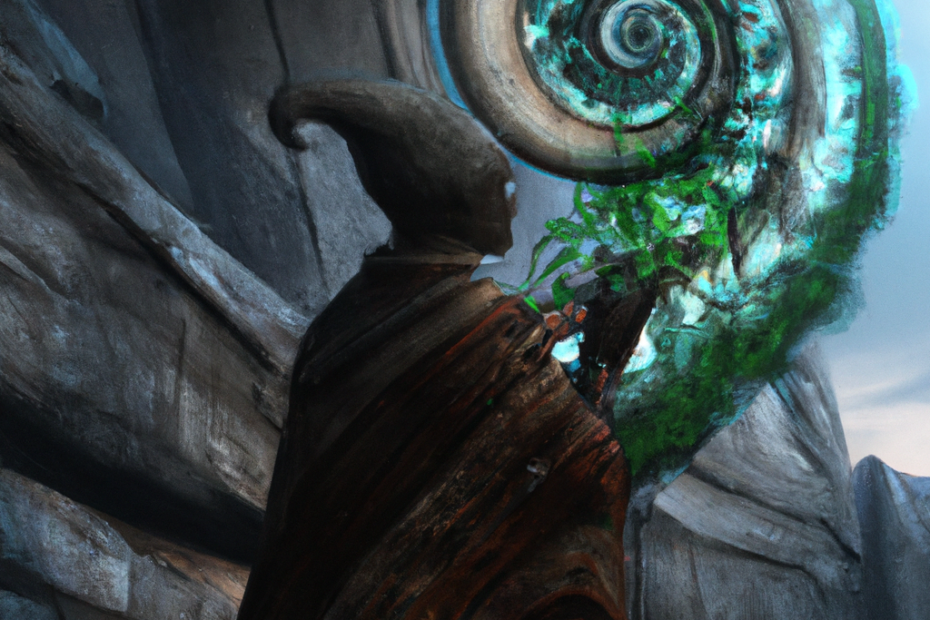Salvia divinorum, also known as “Diviner’s Sage,” is a fascinating and unique plant that has gained popularity for its potential health benefits and spiritual uses. In this comprehensive guide, we will explore the process of growing Salvia divinorum from seeds, including its requirements, germination methods, care for seedlings, and common problems that may arise. Whether you are a seasoned gardener or a beginner looking to cultivate this remarkable plant, this article will provide you with all the essential information you need to successfully grow Salvia divinorum from seeds.
From understanding the climate and temperature needs to learning about germination techniques and caring for the seedlings, we will cover every aspect to ensure a successful and rewarding growing experience. We will discuss the benefits of growing Salvia divinorum and where you can obtain the seeds to start your own cultivation journey. So, if you’re ready to embark on this horticultural adventure and learn how to nurture Salvia divinorum from its humble seeds to thriving plants, read on to discover the secrets of cultivating this extraordinary botanical specimen.
What is Salvia divinorum?
Salvia divinorum is a plant species belonging to the Lamiaceae family and is known for its psychoactive properties.
It is indigenous to the cloud forests of Mexico, where it has been used by indigenous cultures for centuries in traditional healing and divination practices. The plant is characterized by its unique psychoactive compound, known as salvinorin A, which induces powerful hallucinogenic effects when consumed.
Salvia divinorum is cultivated through vegetative propagation or by growing it from seeds, and it requires a humid and shaded environment for optimal growth. The psychoactive effects of Salvia divinorum are distinct, often described as intense but short-lived, making it a subject of interest for researchers studying its potential therapeutic applications.
What are the Benefits of Growing Salvia divinorum?
Growing Salvia divinorum offers an opportunity to engage with its rich medicinal and ethnobotanical history while cultivating its potent leaves, stems, and flowers for various applications.
The traditional uses of Salvia divinorum in indigenous cultures, particularly among the Mazatec people of Mexico, reflect its significance as a sacred plant for spiritual and healing rituals. Medicinally, it is known for its potential in alleviating symptoms of pain, depression, and anxiety. The psychoactive effects of Salvia divinorum, primarily attributed to its active compound salvinorin A, make it a subject of interest for researchers exploring its impact on consciousness and perception. Cultivating this plant allows for a deeper understanding of its multifaceted properties and the opportunity to contribute to its conservation and sustainable use.
What are the Requirements for Growing Salvia divinorum from Seeds?
Growing Salvia divinorum from seeds entails specific requirements, including suitable soil, adequate light, water, temperature, humidity, and fertilization for successful cultivation.
The soil should be well-draining and rich in organic matter, while the plant requires partial shade to thrive. It’s crucial to maintain consistent moisture without waterlogging the soil. Salvia divinorum prefers warm temperatures between 65-85°F and high humidity levels. Fertilization is essential during the growing season, using a balanced, water-soluble fertilizer every few weeks. By satisfying these requirements, one can create the ideal environment for Salvia divinorum to flourish from seed to mature plant.
Climate and Temperature
The climate and temperature play a crucial role in the outdoor cultivation of Salvia divinorum, influencing its growth and development.
Exposure to temperatures below 50°F for extended periods can lead to stunted growth or even damage to the plant. On the other hand, excessively hot and dry conditions can also pose challenges. Salvia divinorum thrives in a warm, humid climate with ample sunlight. It requires well-draining soil and regular watering to maintain moisture levels. These conditions are essential for the plant to flourish and produce the psychoactive compounds it is known for.
Soil and Watering
The choice of soil and appropriate watering practices are critical considerations for both indoor and outdoor cultivation of Salvia divinorum.
For indoor cultivation, it is advisable to use well-draining soil with a good mixture of organic components such as perlite or sand to ensure adequate aeration for the roots. Maintaining a consistent watering schedule, allowing the soil to dry out slightly between watering sessions, is essential to prevent waterlogging.
Conversely, for outdoor cultivation, a loamy soil with excellent drainage capabilities is preferable, allowing excess water to flow away from the plant’s roots. Watering frequency should be adjusted based on the climate and season, as excessive watering can lead to root rot while insufficient watering can cause stress to the plant.”
Light and Humidity
Proper light exposure and humidity levels are essential factors for the successful cultivation and propagation of Salvia divinorum in both indoor and outdoor environments.
Light plays a crucial role in the growth and development of Salvia divinorum, as it requires bright, indirect sunlight when grown indoors and partial shade when cultivated outdoors. For indoor settings, providing 12-14 hours of sunlight through grow lights or placing the plant near a south-facing window can simulate natural conditions. On the other hand, in outdoor settings, it’s important to monitor the sunlight exposure and ensure the plant receives dappled sunlight to prevent sunburn.
Maintaining moderate humidity levels around 50-80% is vital for the plant’s overall well-being, with regular misting or using a humidifier being effective methods to achieve optimal conditions.
Where Can You Get Salvia divinorum Seeds?
Salvia divinorum seeds can be obtained from reputable sources such as specialized plant collectors or botanical gardens that focus on conserving and propagating this unique plant species.
These collectors and gardens often have a deep understanding of the plant’s specific requirements, ensuring that the seeds are of high quality and viability. Purchasing from reputable sources offers the advantage of receiving valuable guidance on the cultivation and care of Salvia divinorum, contributing to the success of growing this fascinating plant.
It is important to prioritize ethical and legal procurement by obtaining seeds from recognized entities committed to the conservation and sustainable use of plant species.
How to Germinate Salvia divinorum Seeds?
Germinating Salvia divinorum seeds involves specific techniques that cater to the unique characteristics of this plant species within the Lamiaceae family and the Salvia genus.
These seeds have a high degree of dormancy, necessitating specialized methods such as scarification or stratification to break their dormancy and promote successful germination. Maintaining stable temperatures and humidity levels is crucial during the germination process, as Salvia divinorum requires a warm and moist environment for optimal sprouting.
Understanding the specific light conditions and soil composition suitable for Salvia divinorum is also essential for ensuring the healthy growth of the germinating seeds.
Preparing the Seeds
Proper preparation of Salvia divinorum seeds before germination is essential to ensure favorable conditions for their successful sprouting and growth.
This can be achieved by starting with fresh seeds from a reputable supplier. To prepare the seeds, a simple yet critical step is to lightly scarify the outer seed coat to help the seeds absorb water more effectively. After scarification, soaking the seeds in room temperature water for 24 hours can further enhance their hydration and encourage the germination process.
Once adequately soaked, the seeds should be planted in a well-draining, moisture-retentive growing medium, such as a mix of peat moss and perlite. It is advisable to keep the growing medium consistently moist but not waterlogged, and to provide warmth and indirect sunlight to create the optimal environment for germination.
Germination Method 1: Paper Towel Method
The paper towel method is a popular and effective technique for germinating Salvia divinorum seeds, providing a controlled environment for the initial stages of seed sprouting.
To begin, dampen a paper towel with distilled water and wring out any excess moisture. Place the Salvia divinorum seeds evenly spaced on the paper towel. Carefully fold the damp paper towel over the seeds, creating a packet. Then, seal the packet inside a ziplock bag to maintain humidity. Keep the bag in a warm, dark place, such as on top of a refrigerator or in a cupboard.
Regularly check the paper towel for moisture, ensuring it remains damp but not waterlogged. After a few days to a week, the seeds should germinate, showing tiny root tips or sprouts.”
Germination Method 2: Planting Directly in Soil
Another viable method for germinating Salvia divinorum seeds involves direct planting into suitable soil, providing the seeds with the necessary conditions for sprouting and subsequent growth.
This approach requires the selection of nutrient-rich, well-draining soil to enhance the chances of successful germination. Ensuring adequate moisture levels without causing waterlogging is crucial during the initial stages. Planting the seeds at a suitable depth, typically around 1/8 inch, and maintaining a stable temperature between 70-85°F is essential for favorable germination.
Regular monitoring of soil moisture and providing gentle watering when necessary are vital steps to support the early growth of the Salvia divinorum seeds.
How to Care for Salvia divinorum Seedlings?
Caring for Salvia divinorum seedlings involves attentive potting, appropriate watering, light exposure, temperature control, and soil maintenance to support their healthy growth.
These seedlings thrive in well-draining soil with a slightly acidic pH. It’s crucial to water them consistently, keeping the soil damp but not waterlogged. Providing indirect sunlight or fluorescent grow lights for 14-16 hours a day is essential for optimal growth. Maintaining a temperature range of 70-85°F (21-29°C) and high humidity levels supports their development. Regularly inspecting for pests and diseases, and repotting as they grow, are also vital for nurturing healthy Salvia divinorum seedlings.
How to Transplant Salvia divinorum Seedlings?
Transplanting Salvia divinorum seedlings involves careful handling and suitable gardening practices to ensure the successful establishment of the young plants in their new growing environment.
It is crucial to prepare the new location for the seedlings, ensuring that the soil is well-drained and fertile, with a slightly acidic pH level. When transplanting, gently lift each seedling from its original container, being mindful not to disturb the roots excessively. The transplanting process should be conducted during the plant’s dormant stage to minimize stress. Once replanted, provide adequate water and partial shade to aid the seedlings in adjusting to their new surroundings.
What are the Common Problems When Growing Salvia divinorum from Seeds?
Growing Salvia divinorum from seeds may encounter common challenges such as pests, nutrient deficiencies, and diseases that require proactive management for successful cultivation.
Pests like spider mites and aphids are known to infest Salvia divinorum, causing leaf damage and hindering growth. Nutrient deficiencies, especially nitrogen, phosphorus, and potassium, can manifest in yellowing leaves and poor growth.
Diseases such as powdery mildew and root rot can also plague the plant, making it crucial to monitor for signs of infection and promptly address them. It’s essential for growers to maintain a vigilant eye and implement preventive measures to ensure the healthy development of Salvia divinorum plants from seedlings.
Damping Off Disease
Damping off disease poses a significant threat to Salvia divinorum seeds and seedlings, requiring vigilant pest management and preventive measures to mitigate its impact.
It is crucial to create optimal growing conditions for Salvia divinorum to resist damping off disease, including well-draining soil, adequate air circulation, and proper watering techniques to prevent excess moisture. Using sterilized seed-starting mix and sanitation practices can greatly reduce the risk of infection. Early detection of symptoms such as wilting or discolored stems is essential for prompt intervention. Implementing biological controls and natural predators of damping off pathogens can also be impactful in managing this disease.
Pests and Insects
Pest and insect infestations can negatively impact the growth of Salvia divinorum seeds, necessitating effective management strategies to safeguard the plants from potential harm.
These pests and insects, such as aphids, whiteflies, and spider mites, can quickly spread and damage the delicate leaves and stems of Salvia divinorum. Implementing preventive measures like regular inspection, pruning, and proper sanitation can help mitigate infestations. Using natural predators like ladybugs or introducing organic pesticides can aid in controlling these pests without harming the delicate ecosystem. It is crucial to stay vigilant and promptly address any signs of pest presence to ensure the successful cultivation of Salvia divinorum seeds.
Nutrient Deficiencies
Nutrient deficiencies can impede the healthy growth of Salvia divinorum seeds, emphasizing the need for proper soil nutrition and strategic fertilization to address potential deficiencies.
These deficiencies can significantly impact the development of the plant, affecting its overall health and reducing its potential yield. When cultivating Salvia divinorum, it’s crucial to ensure that the soil is rich in essential nutrients such as nitrogen, phosphorus, and potassium.
Incorporating organic matter and compost can help maintain the soil’s fertility, while targeted fertilization strategies tailored to the plant’s specific requirements can help mitigate any potential deficiencies. By understanding the impact of nutrient deficiencies and effectively managing soil nutrition, growers can promote the healthy growth and development of Salvia divinorum seeds.
How Long Does it Take to Grow Salvia divinorum from Seeds?
The growth of Salvia divinorum from seeds encompasses a maturation period that is influenced by its reproductive cycle, typically requiring a specific duration for full development.
During the early stages, Salvia divinorum seeds require a warm, humid environment for successful germination, which usually takes around 2 to 3 weeks. Once the seedlings have developed, they undergo a growth phase lasting approximately 3 to 6 months, during which they establish a robust root system and sturdy stems.
As the plant matures, it enters its reproductive cycle, often marked by flowering, which may occur after 1-2 years. The unique life cycle of Salvia divinorum adds to its allure as a fascinating botanical specimen.
Frequently Asked Questions
How do I grow Salvia divinorum from seeds?
To grow Salvia divinorum from seeds, you will need to start by obtaining fresh, viable seeds from a reputable source. Then, carefully plant the seeds in well-draining soil and keep them in a warm, humid environment. It can take several weeks for the seeds to germinate, and it’s important to provide the proper conditions to ensure successful growth.
What type of soil is best for growing Salvia divinorum seeds?
Salvia divinorum seeds do best in well-draining soil that is rich in nutrients. A mix of peat moss, perlite, and vermiculite is a good option for starting seeds. Avoid using heavy potting soil or soil with a high clay content, as this can lead to poor drainage and hinder the growth of the seeds.
How long does it take for Salvia divinorum seeds to germinate?
It can take anywhere from 2-6 weeks for Salvia divinorum seeds to germinate. However, some seeds may take longer or may not germinate at all. It’s important to be patient and provide the proper conditions for germination, such as warm temperatures, moisture, and plenty of light.
What is the ideal temperature for growing Salvia divinorum seeds?
Salvia divinorum seeds require warm temperatures between 70-80°F (21-27°C) for successful germination and growth. It’s important to maintain a consistent temperature throughout the germination process to ensure the best results.
Do Salvia divinorum seeds require light to germinate?
Yes, Salvia divinorum seeds do require light to germinate. However, they should not be exposed to direct sunlight, as this can dry out the soil and damage the fragile seedlings. Instead, provide indirect light or use a grow light to mimic natural conditions.
What are some common mistakes to avoid when growing Salvia divinorum seeds?
Some common mistakes to avoid when growing Salvia divinorum seeds include overwatering, using poor quality soil, not providing enough light, and exposing the seeds to extreme temperatures. It’s also important to handle the seeds with care and avoid damaging them during the planting process.
John Marston, a seasoned writer since 2009, has penned hundreds of articles on Salvia Divinorum across the web. As a full-time writer at a prominent online salvia retailer, he continues to contribute valuable insights, combining expertise and passion to unravel the diverse facets of Salvia Divinorum. Beyond his writing, John serves as a budtender in the cannabis industry.




